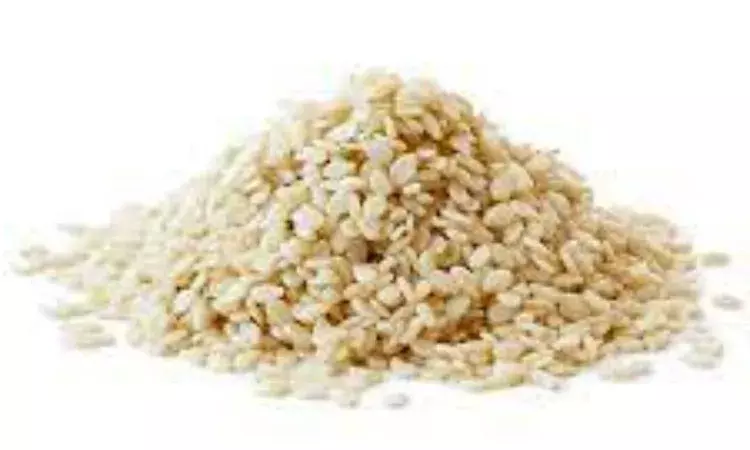- Home
- Medical news & Guidelines
- Anesthesiology
- Cardiology and CTVS
- Critical Care
- Dentistry
- Dermatology
- Diabetes and Endocrinology
- ENT
- Gastroenterology
- Medicine
- Nephrology
- Neurology
- Obstretics-Gynaecology
- Oncology
- Ophthalmology
- Orthopaedics
- Pediatrics-Neonatology
- Psychiatry
- Pulmonology
- Radiology
- Surgery
- Urology
- Laboratory Medicine
- Diet
- Nursing
- Paramedical
- Physiotherapy
- Health news
- Fact Check
- Bone Health Fact Check
- Brain Health Fact Check
- Cancer Related Fact Check
- Child Care Fact Check
- Dental and oral health fact check
- Diabetes and metabolic health fact check
- Diet and Nutrition Fact Check
- Eye and ENT Care Fact Check
- Fitness fact check
- Gut health fact check
- Heart health fact check
- Kidney health fact check
- Medical education fact check
- Men's health fact check
- Respiratory fact check
- Skin and hair care fact check
- Vaccine and Immunization fact check
- Women's health fact check
- AYUSH
- State News
- Andaman and Nicobar Islands
- Andhra Pradesh
- Arunachal Pradesh
- Assam
- Bihar
- Chandigarh
- Chattisgarh
- Dadra and Nagar Haveli
- Daman and Diu
- Delhi
- Goa
- Gujarat
- Haryana
- Himachal Pradesh
- Jammu & Kashmir
- Jharkhand
- Karnataka
- Kerala
- Ladakh
- Lakshadweep
- Madhya Pradesh
- Maharashtra
- Manipur
- Meghalaya
- Mizoram
- Nagaland
- Odisha
- Puducherry
- Punjab
- Rajasthan
- Sikkim
- Tamil Nadu
- Telangana
- Tripura
- Uttar Pradesh
- Uttrakhand
- West Bengal
- Medical Education
- Industry
Hummus, a major trigger of sesame-induced anaphylaxis in children: Study

Canada: Hummus is the major trigger of sesame-induced anaphylaxis among children in Canada, a recent study in Annals of Allergy, Asthma & Immunology has suggested. Researchers stress the need for knowledge translation focused on prompt epinephrine use and product-labeling policies to limit sesame reactions in communities.
Sesame can lead to severe allergic reactions and is a priority allergen in Canada. Carly Sillcox, McGill University Health Centre, Montreal, QC, Canada, and colleagues conducted the study with the primary aim to assess clinical characteristics and management of pediatric sesame-induced anaphylaxis and identify factors associated with epinephrine treatment.
For this purpose, the researchers enrolled children with sesame-induced anaphylaxis presenting to seven emergency departments in four Canadian provinces and one regional emergency medical service between 2011-2021 in the Cross-Canada Anaphylaxis Registry.
Data on symptoms, severity, triggers, and management were provided by standardized recruitment forms. Associations with epinephrine treatment pre-emergency department and multiple epinephrine dosages were evaluated using multivariate logistic regression.
Based on the study, the researchers reported the following:
- Of all food-induced anaphylactic reactions (n=3279 children), sesame accounted for 4.0% (n=130 children), of which 61.5% were males, and the average age was 5.0 years.
- Hummus containing sesame paste triggered 58.8% of reactions.
- In the pre-emergency department setting, 32.3% received epinephrine, and it was more likely to be used in males [adjusted Odds Ratio 1.27] and those with a known food allergy [adjusted Odds Ratio 1.36].
- In the emergency department, 47.7% of cases received epinephrine, with older children more likely to receive multiple epinephrine doses [adjusted Odds Ratio 1.00].
The researchers concluded, "hummus is the major trigger of sesame-induced anaphylaxis in Canada. Knowledge translation focused on prompt epinephrine use and product-labeling policies are needed to limit sesame reactions in communities."
Reference:
The study titled, "Sesame-Induced Anaphylaxis in Pediatric Patients from the Cross-Canada Anaphylaxis Registry," was published in Annals of Allergy, Asthma & Immunology.
Dr Kamal Kant Kohli-MBBS, DTCD- a chest specialist with more than 30 years of practice and a flair for writing clinical articles, Dr Kamal Kant Kohli joined Medical Dialogues as a Chief Editor of Medical News. Besides writing articles, as an editor, he proofreads and verifies all the medical content published on Medical Dialogues including those coming from journals, studies,medical conferences,guidelines etc. Email: drkohli@medicaldialogues.in. Contact no. 011-43720751


